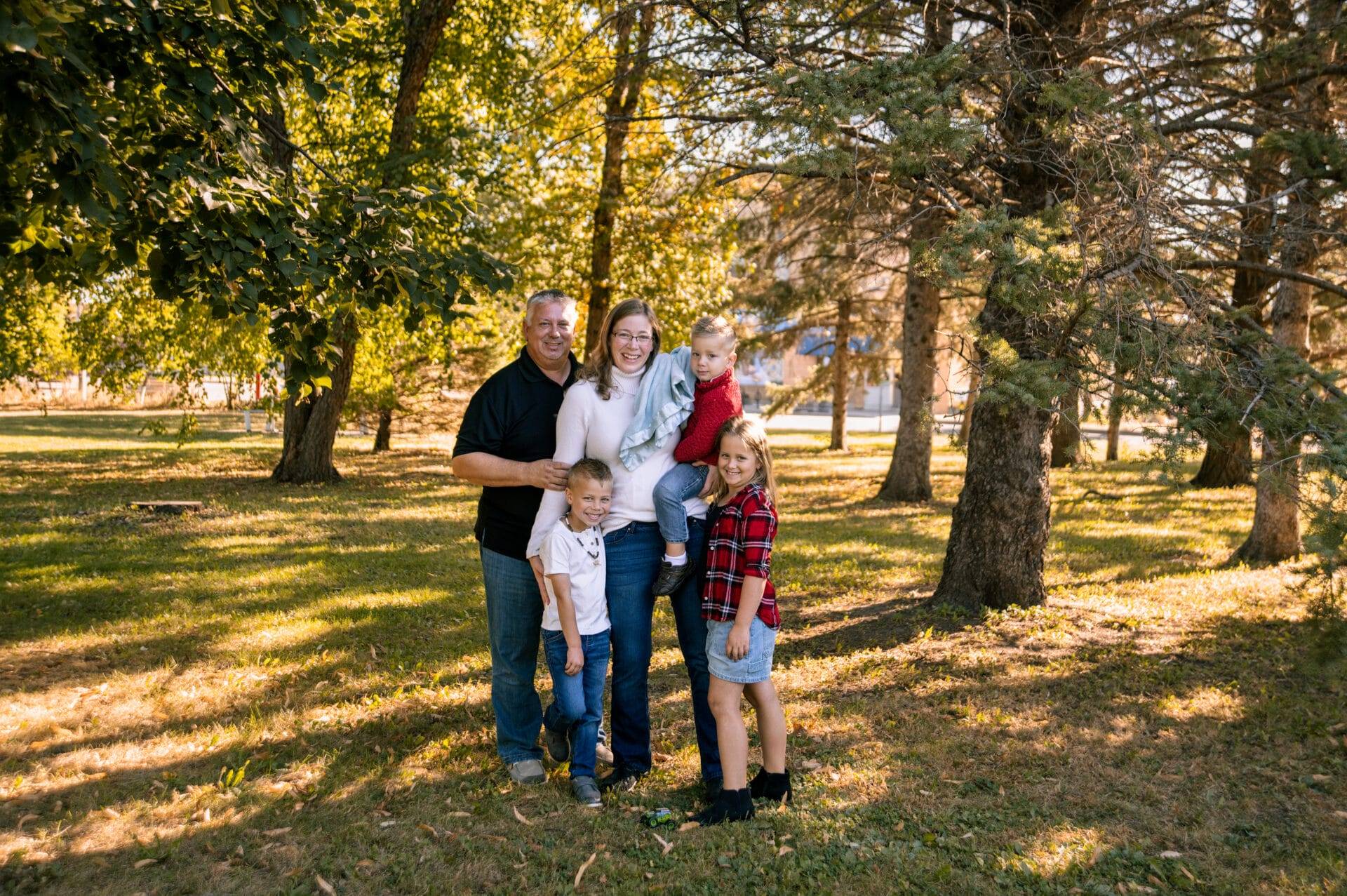Whether it’s the delicate innocence of a newborn or the heartwarming bond within a family, photography has the extraordinary power to freeze time and preserve cherished memories. As a newborn and family photographer, your ability to capture these precious moments is not only an art form but also a testament to your skill and expertise. And when it comes to showcasing your talents to potential clients, nothing speaks louder than a compelling portfolio.
In this blog article, we will delve into the significance of having an outstanding portfolio as a newborn and family photographer. We’ll explore how it can elevate your business, attract clients who resonate with your unique style, and establish you as a trusted professional in this specialized field. So grab your camera and join us on this journey as we uncover the secrets behind creating an irresistible portfolio that leaves lasting impressions.
(Please note: Throughout this article, we will refer specifically to newborn and family photography; however, many of these principles can be applied to various genres within the photography industry.)
Defining Your Style and Vision
Defining your style and vision is a crucial step in establishing yourself as a unique and recognizable artist. It involves identifying your strengths, preferences, and artistic influences. By understanding what sets you apart and what resonates with you, you can translate your vision into cohesive portfolio images that reflect your creative identity.
Identify Your Strengths
Every artist has unique strengths that shape their work and set them apart from others. Take some time to reflect on what you excel at in your art practice. Are you particularly skilled at capturing emotions in your portraits? Do you have a knack for incorporating vibrant colors into your work? Identifying your strengths will not only boost your confidence but also help you focus on what makes your art stand out.
Define Your Preferences
Understanding your preferences is key to developing a coherent artistic style. Consider the subjects, themes, mediums, and techniques that you are naturally drawn to. Do you prefer surreal landscapes or intimate still-life compositions? Are you more comfortable working with acrylics, watercolors, or digital tools? By clarifying your preferences, you can create art that is true to your personal taste and interests.
Explore Artistic Influences
Artists are often inspired and influenced by the work of others. Discovering your artistic influences can provide valuable insights into your own style and vision. Study the works of artists you admire and analyze what elements resonate with you. It could be their use of light and shadow, their narrative storytelling, or their experimental techniques. By incorporating aspects of your favorite artists’ work into your own practice, you can develop a richer and more nuanced creative voice.
Translate Vision into Portfolio Images
Once you have a clear understanding of your strengths, preferences, and influences, it’s time to translate your artistic vision into tangible portfolio images. Consider how you can visually communicate your unique style and perspective through a cohesive body of work. Pay attention to elements such as composition, color palette, and storytelling to ensure that your portfolio images reflect the essence of your creative vision.
Remember, defining your style and vision is an ongoing process that evolves as you grow and experiment as an artist. Stay open to new inspirations and influences, but always stay true to what makes your art uniquely yours.
Curating Your Best Work
When it comes to showcasing your talent and expertise through a portfolio, curating your best work is essential. This process involves carefully selecting images that not only represent your style, skill, and versatility but also organizing and presenting them in a visually appealing manner. Here are some key points to consider when curating your portfolio:
Selecting Images
Choosing the right images for your portfolio is crucial in making a positive impression on potential clients or employers. When selecting images, keep the following tips in mind:
- Highlight Your Style: Pick images that truly reflect your unique style as a creative professional. Whether it’s photography, design, or any other form of art, your portfolio should showcase what sets you apart from others in your field.
- Demonstrate Your Skill: Include pieces that demonstrate your technical skill and proficiency. Showcasing a range of work that highlights your abilities will help viewers understand the depth of your expertise.
- Show Versatility: While emphasizing your style is important, it’s also beneficial to exhibit your versatility. Include a variety of projects that demonstrate your ability to work across different styles, genres, or mediums.
Organizing and Presenting
Once you have selected the images for your portfolio, the next step is to organize and present them effectively. Follow these guidelines to ensure that your portfolio is visually appealing and engaging:
- Establish a Cohesive Theme: Consider creating sections or categories within your portfolio that help organize your work thematically. This can make it easier for viewers to navigate and understand the different aspects of your creative output.
- Pay Attention to Layout: The way you arrange your images can significantly impact the overall aesthetic of your portfolio. Experiment with different layouts to find one that enhances the visual impact of your work.
- Quality Over Quantity: While it’s important to showcase a variety of work, avoid overwhelming your audience with too many images. Focus on selecting high-quality pieces that best represent your skills and accomplishments.
- Provide Context: Include brief descriptions or captions for each image to provide context and insight into the creative process behind your work. This can help viewers better understand the story behind each piece.
By carefully curating your best work and presenting it in a visually compelling manner, you can create a portfolio that effectively communicates your talent, professionalism, and creativity. Remember, your portfolio is a reflection of your skills and abilities, so make sure to put your best foot forward!
Showcasing Diversity and Range
In today’s society, it is crucial to recognize and celebrate the diverse range of family dynamics, settings, and compositions that exist. By showcasing this diversity, we not only embrace the different ways in which families come together, but we also acknowledge the beauty and strength that arises from these various structures. This blog post aims to explore the importance of including a variety of family dynamics and settings in our narratives, while also emphasizing the need for versatility while maintaining consistency.
Variety of Family Dynamics
Family dynamics refer to the way in which family members interact with each other, communicate, and function as a unit. It is essential to represent a diverse range of family dynamics in our storytelling to reflect the reality of the world we live in. Families come in all shapes and sizes, and it is important to showcase single-parent families, blended families, multi-generational families, LGBTQ+ families, and more.
- Single-Parent Families: Single-parent families often face unique challenges and triumphs. By including these family dynamics in our narratives, we can shed light on the strength and resilience of single parents and their children.
- Blended Families: Blended families, where two families are brought together through remarriage, are becoming increasingly common. By showcasing blended families, we can explore the complexities and joys that come with merging two separate family units.
- Multi-Generational Families: In many cultures, multi-generational families living under one roof is a common practice. By highlighting these family dynamics, we can celebrate the wisdom and traditions that are passed down through generations.
- LGBTQ+ Families: LGBTQ+ families often face stigma and discrimination, but by representing these families in our stories, we can promote acceptance and understanding.
By incorporating a variety of family dynamics in our narratives, we can create a more inclusive and representative portrayal of the world around us.
Versatility and Consistency
While it is important to showcase diversity in family dynamics and settings, it is equally crucial to demonstrate versatility as storytellers. Versatility allows us to explore different narratives, genres, and themes, keeping our storytelling fresh and engaging. However, amidst this versatility, it is essential to maintain consistency in our messaging and values.
“Versatility is the key to staying relevant and captivating your audience, but consistency is what builds trust and loyalty.”
By being versatile in our storytelling, we can cater to a wider audience and keep them engaged. Whether we are writing about a single-parent family in a contemporary setting or a multi-generational family in a historical context, versatility allows us to stretch our creative boundaries and explore new storytelling avenues. However, through this exploration, it is crucial to stay true to our core values and maintain consistency in the messages we convey.
Consistency does not mean sticking to a rigid formula or storyline, but rather ensuring that our stories are authentic, impactful, and aligned with our values. It is about creating a cohesive narrative that resonates with our audience and leaves a lasting impression.
In conclusion, showcasing diversity and range in family dynamics, settings, and compositions is essential for creating rich and inclusive narratives. By incorporating a variety of family structures and being versatile in our storytelling while maintaining consistency, we can create impactful stories that resonate with audiences from all walks of life.
Highlighting Authentic Moments and Emotions
Authentic moments and emotions are the heart and soul of any meaningful photography. As a photographer, your goal isn’t just to capture faces; it’s to capture the genuine connections, emotions, and interactions that make each moment special. Here are some key strategies to help you highlight authentic moments and emotions in your photography:
Capture Genuine Connections
One of the most powerful aspects of photography is its ability to freeze a moment in time that encapsulates a genuine connection between people. Whether it’s a loving glance between a couple, a playful interaction between siblings, or a heartfelt embrace between friends, these connections are what add depth and emotion to your images.
To capture these authentic connections, focus on observing the dynamics between your subjects. Encourage them to interact naturally and be themselves. Avoid stiff poses or forced smiles, as these can detract from the authenticity of the moment. Instead, let the moments unfold organically and be ready to click the shutter at the perfect instant.
Tell Stories and Evoke Emotions Through Imagery
Photography is a powerful storytelling medium. Each image has the potential to evoke a range of emotions and convey a narrative. To highlight authentic moments and emotions, strive to tell a story through your imagery.
Consider the context surrounding your subjects and look for ways to incorporate elements that enhance the emotional impact of the scene. This could be the environment, the lighting, or even subtle details that add depth to the story being told.
Experiment with different angles, perspectives, and compositions to create dynamic and engaging visuals that draw viewers in and evoke a strong emotional response. Remember, a picture is worth a thousand words, so use your images to speak volumes about the authentic moments and emotions you capture.
By following these strategies, you can elevate your photography to not just document moments, but to capture the true essence of human connections and emotions.
Paying Attention to Composition and Technique
When it comes to creating compelling and visually appealing photographs, mastering composition and technique is essential. By understanding and effectively applying compositional elements like framing and balance, as well as perfecting technical aspects such as exposure and focus, you can elevate the quality of your photography to new heights.
Mastering Compositional Elements
Composition is the foundation of a great photograph. It involves how the elements within the frame are arranged and how they interact with each other. One crucial aspect of composition is framing.
**Framing:**
When you frame a subject within your photograph, you are essentially creating a boundary around it, drawing the viewer’s attention to the main subject. This can be achieved by using natural elements like archways, windows, or trees to frame your subject. By framing your subject, you create depth and context in your photographs.
Another key compositional element to master is balance.
**Balance:**
Balance in photography refers to the distribution of visual weight in an image. A well-balanced photograph is visually pleasing and harmonious. There are two types of balance: symmetrical balance, where elements are evenly distributed on either side of the frame, and asymmetrical balance, where different elements are placed strategically to create equilibrium.
Perfecting Technical Aspects
While composition lays the foundation for a great photograph, technical aspects such as exposure and focus are equally important in capturing a visually stunning image.
**Exposure:**
Exposure refers to the amount of light that enters the camera sensor when a photograph is taken. A well-exposed photograph has the right balance of brightness and contrast, ensuring that details are clear and colors are accurate. Understanding exposure settings like aperture, shutter speed, and ISO is crucial for achieving the perfect exposure in your photographs.
Focus is another technical aspect that photographers must master.
**Focus:**
Focusing correctly is essential for capturing sharp and clear images. Whether you choose to focus on a specific subject or create a shallow depth of field to isolate your subject, having precise focus adds impact to your photographs. Modern cameras offer various focusing modes like single-point autofocus, continuous autofocus, and manual focus, giving you control over where the focus lies in your composition.
By paying attention to both composition and technique, you can create photographs that not only capture a moment but also evoke emotion and tell a story. Practice applying these principles in your photography, experiment with different techniques, and don’t be afraid to push the boundaries of creativity. With dedication and continuous learning, you can refine your skills and produce stunning visual imagery that resonates with your audience.
Engaging Viewers with Your Story
Crafting a compelling narrative is essential for capturing the attention and interest of viewers. Whether you are a photographer, designer, or artist, telling a story through your work can create a deeper connection with your audience. Here are some key strategies to engage viewers with your story:
Craft a Narrative that Resonates with Viewers
When creating a narrative for your portfolio, think about the message you want to convey and how you want viewers to feel. Consider the following tips:
- Identify Your Core Message: Start by identifying the central theme or message you want to communicate through your work. This could be about nature, human emotions, social issues, or personal experiences.
- Develop a Story Arc: Structure your portfolio to have a clear beginning, middle, and end. Take viewers on a journey through your work, building up to a climax or revelation.
- Use Symbolism and Metaphors: Infuse your images with symbols or metaphors that add layers of meaning to your story. This can make viewers pause and reflect on the deeper implications of your work.
By crafting a narrative that resonates with viewers on a personal or emotional level, you can create a memorable and impactful experience that lingers long after they have viewed your portfolio.
Engage Emotionally and Intellectually Through Portfolio Images
Your portfolio images are the visual representations of your narrative, and they play a crucial role in engaging viewers both emotionally and intellectually. Consider the following techniques:
- Choose Images Thoughtfully: Select images that not only showcase your technical skill but also evoke a range of emotions in viewers. Consider the composition, lighting, and subject matter of each image.
- Create Visual Contrast: Use contrast in your images to create visual interest and draw viewers’ attention to key elements. Contrast in color, texture, and mood can help convey your narrative more effectively.
- Include Captions or Descriptions: Provide context for your images by including captions or descriptions that explain the story behind each piece. This can enrich viewers’ understanding and make the viewing experience more immersive.
By engaging viewers both emotionally and intellectually through your portfolio images, you can create a multi-dimensional experience that sparks curiosity and fosters a deeper connection with your audience.
Seeking Feedback and Continuous Improvement
Feedback is an essential tool for growth and development, especially in creative fields like design. By seeking feedback from peers, mentors, and clients, designers can gain valuable insights that can help them refine their style, technique, and portfolio presentation.
Solicit Constructive Criticism
Constructive criticism is feedback that is provided in a helpful and supportive way, with the intention of helping the recipient improve. When seeking feedback from peers, mentors, or clients, it is important to ask for specific and actionable advice. Rather than simply asking, “What do you think?”, designers should ask targeted questions such as:
- What do you think could be improved in this design?
- Are there any elements that are unclear or confusing?
- How do you think this design could better meet the needs of the target audience?
By asking specific questions, designers can receive more detailed and useful feedback that will help them identify areas for improvement.
Refine Style, Technique, and Portfolio Presentation
Once feedback has been gathered, designers can begin the process of refining their work. This may involve making changes to their design style, experimenting with new techniques, or updating their portfolio presentation. Here are some tips for using feedback to improve in these areas:
- Style: If feedback suggests that a designer’s style is inconsistent or outdated, they may need to experiment with new approaches. This could involve studying current design trends, practicing new techniques, or seeking inspiration from other artists.
- Technique: Feedback on technique may highlight areas where a designer’s skills are lacking. In this case, designers should dedicate time to practice and improvement. This could involve taking online courses, attending workshops, or simply spending more time honing their craft.
- Portfolio Presentation: How a designer presents their work can have a significant impact on how it is perceived. If feedback suggests that a portfolio is poorly organized or difficult to navigate, designers should consider redesigning it. This could involve creating separate sections for different types of work, adding detailed descriptions to each piece, or showcasing a range of projects to demonstrate versatility.
By continually seeking feedback and using it to guide their improvement, designers can enhance their skills, develop their unique style, and present their work effectively to clients and employers. Remember, feedback is not a one-time exercise – it is an ongoing process that is essential for growth and success in the design industry.
Conclusion
In conclusion, creating a standout portfolio is essential for showcasing your skills and experience to potential clients or employers. By following key tips and taking action to build or refine your portfolio, you can greatly increase your chances of success in your chosen field. Here is a brief summary of the main points discussed:
- Recap key tips for creating standout portfolio:
- Define your purpose: Clearly understand why you are creating a portfolio and who your target audience is.
- Showcase your best work: Select high-quality samples that demonstrate your skills and expertise.
- Keep it organized: Structure your portfolio in a logical and easy-to-navigate manner.
- Stay consistent: Maintain a cohesive style and theme throughout your portfolio.
- Provide context: Offer explanations or descriptions for each piece to give viewers insight into your process and abilities.
- Encourage action in building or refining portfolios:
- Seek feedback: Request input from peers, mentors, or professionals in your industry to improve your portfolio.
- Update regularly: Stay current with your latest work and remove outdated or irrelevant pieces from your portfolio.
- Experiment and iterate: Don’t be afraid to make changes and try new approaches to see what resonates best with your audience.
- Stay proactive: Continuously seek new opportunities to add to your portfolio and showcase your growth and development.
By incorporating these strategies and taking proactive steps to enhance your portfolio, you can set yourself apart from the competition and make a lasting impression on those who view your work. Remember, your portfolio is a reflection of your skills, creativity, and professionalism, so invest the time and effort needed to make it truly stand out.



